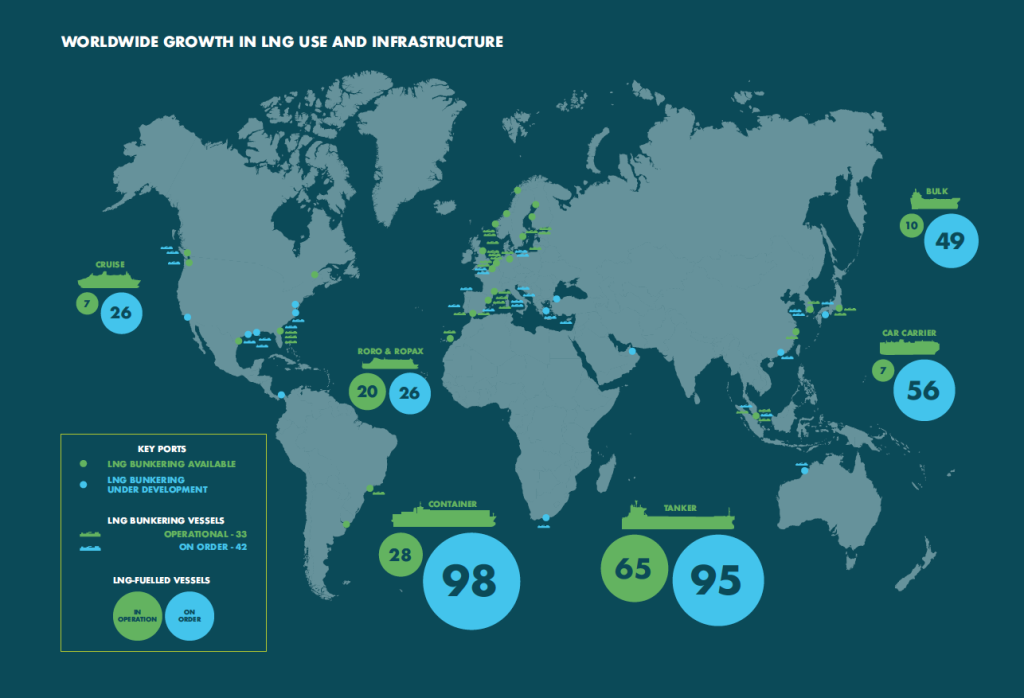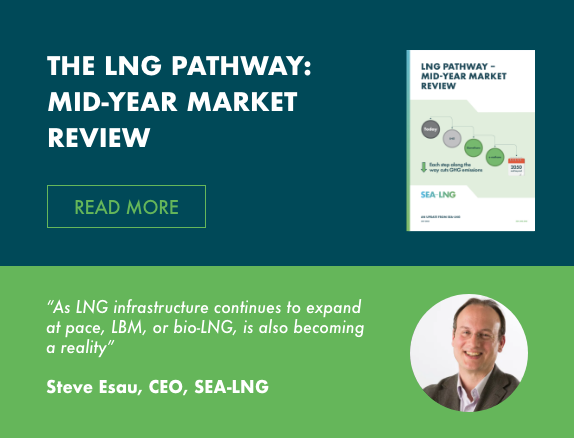20th January 2022
LNG – A FUEL IN TRANSITION

SEA-LNG’s view from the bridge 2021-2022
SEA-LNG is pleased to share with you its overview of LNG as a marine fuel in 2021-2022. This resource highlights how the shipping industry has advanced along the LNG pathway to decarbonisation and outlines what progress will be made in 2022.
“LNG offers the simplest and lowest risk transition to zero-emissions for the maritime sector, starting now.”
- Peter Keller, Chairman, SEA-LNG -
Record year
The rapidly growing order book for LNG-fuelled vessels illustrates that increasing numbers of ship owners and operators understand the environmental and climate benefits of LNG.
LNG-fuelled vessels and infrastructure invested in today will be part of a net zero-future as they can use and deliver bioLNG and renewable synthetic LNG once these fuels become more broadly available.
Decarbonisation can start now. On a well-to-wake basis, LNG offers a 23% cut in greenhouse gas emissions over oil-based marine fuels today. There is no need to wait a decade or longer for other, untried and unproven fuels.
BioLNG from sustainable biomass resources is increasingly available and has massive potential to scale while renewable synthetic LNG will play a key role in maritime decarbonisation as renewable electricity and the electrolyser capacity to produce hydrogen feedstock grows.
The road ahead will not be easy. Polices, at both the global and regional level, should be goal-based and technology-neutral, creating a level playing field for the development of low and zero-carbon marine fuels and propulsion systems. But the fact remains that, as of today, the LNG pathway is the only clear, practical and financially realistic route to decarbonising shipping.
Waiting is not an option.
READ THE FULL REPORT HERE




